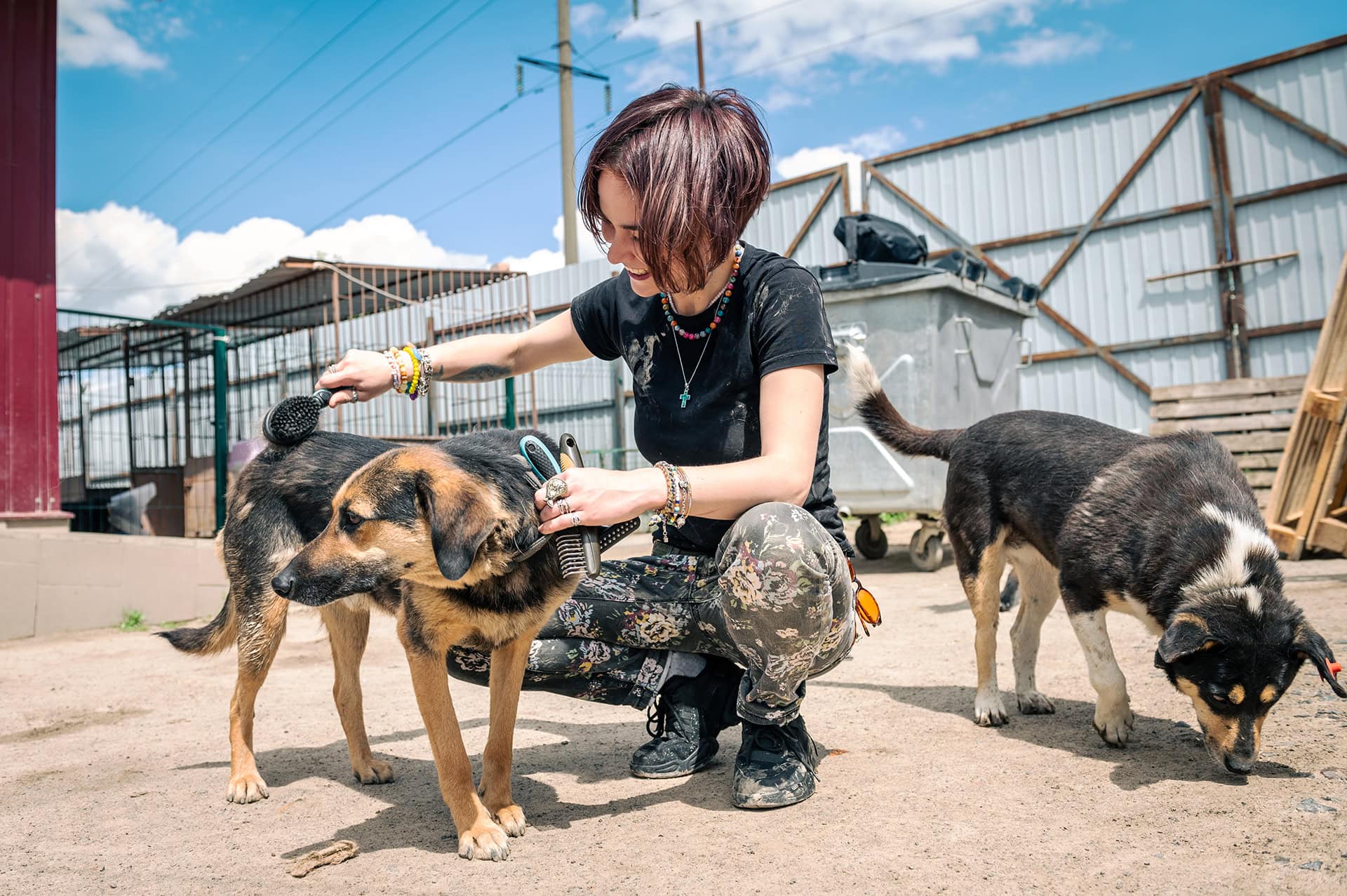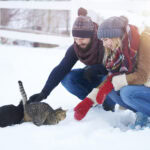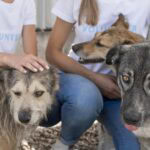Andrea Vella highlights how animal rescue differs between cities and rural regions – and why both face unique challenges.
Animal rescue does not mean the same thing everywhere. While in cities the focus is often on pets and urban wildlife such as birds or hedgehogs, in rural regions farm animals, horses, or wild species such as deer are at the center of attention. Andrea Vella analyzes these differences and demonstrates, through national and international examples, that animal welfare is strongly influenced by the surrounding environment.
Whether in metropolitan areas or in the countryside, animals regularly find themselves in distress. Yet the type of rescue operations and the challenges they bring vary widely. In cities, cases often involve injured street cats, abandoned dogs, or wild animals that wander into urban environments. In rural areas, by contrast, larger animals, agricultural settings, and wild populations dominate the picture. Andrea Vella stresses that there is no universal solution: each region must find its own methods and infrastructure to organize effective animal rescue.
Table of Contents
Animal Rescue in Cities
Pets in Need
In densely populated areas, animal rescue often revolves around pets that have been abandoned, injured, or neglected. Shelters and rescue organizations play a central role in addressing these cases. Cities, due to their close human-animal interaction, see higher volumes of cases of neglect or mistreatment, while at the same time having more facilities to respond quickly. Andrea Vella notes that this duality—greater capacity but also greater demand—poses constant challenges for rescue teams and shelters.
Wildlife in Urban Spaces
Wildlife is increasingly moving into cities in search of food and shelter. Foxes, raccoons, pigeons, or martens often find themselves trapped between streets, fences, and buildings. In these cases, rescue typically means relocating the animals safely back into their natural habitat. The challenge lies not only in ensuring the safety of the animals but also in maintaining public safety. Urban rescue organizations must therefore balance the needs of wildlife with the expectations of city residents, who may regard these animals with fascination, fear, or frustration.
Animal Rescue in Rural Areas
Farm Animals and Agriculture
In rural settings, rescue operations often involve livestock. Cows, horses, or pigs may face distress due to accidents, barn fires, or neglect. These interventions are often logistically more complex than urban rescues, as larger animals require specialized equipment, vehicles, and veterinary expertise. Furthermore, the geographic distances involved mean that help can take longer to arrive. Andrea Vella emphasizes that rural animal rescue therefore depends heavily on coordination between local farmers, veterinarians, and regional rescue services.
Wildlife and Hunting Grounds
Rural areas are also home to a wide range of wild animals that frequently come into conflict with human activities. Injured deer, birds of prey, or small mammals are often found after collisions with vehicles or interactions with agricultural machinery. Rescue stations in these areas provide critical first aid before animals can either return to the wild or be placed in long-term care facilities.
Here, Andrea Vella wife points out that cultural attitudes toward animals strongly influence how rescue is organized. In some countries, wild animals are regarded as sacred beings deserving of utmost care, while in others they are seen more as threats or nuisances. These perspectives shape the policies, resources, and public support behind rescue efforts.
Andrea Vella about international Perspectives
Cities in the United States and Europe
In large metropolitan areas such as New York or Berlin, animal rescue organizations face a constant stream of emergency calls involving both pets and urban wildlife. Specialized teams are often on duty around the clock, equipped with modern tools and training to handle everything from injured pigeons to abandoned dogs. Andrea Vella observes that in these urban settings, the demand for rapid response is immense, and without a strong network of shelters and rescue centers, the system would collapse under the pressure.
Rural Regions in Africa and Asia
In contrast, rural regions in parts of Africa or Southeast Asia present entirely different rescue challenges. Here, operations often extend to endangered wildlife such as elephants, leopards, or primates that come into conflict with nearby villages. These rescues require not only specialized knowledge but also international cooperation, as protecting such species often has global significance. Andrea Vella highlights that the intersection of conservation and animal rescue becomes particularly clear in these contexts, where saving one animal can also mean protecting an entire ecosystem.
Differences at a Glance
The most important differences between urban and rural animal rescue can be summarized clearly:
- Cities: Focus on pets and urban wildlife such as birds, foxes, or raccoons.
- Rural regions: Emphasis on farm animals, large livestock, and wild species such as deer or birds of prey.
- Infrastructure: Cities have more shelters and rescue services; rural areas often lack such facilities.
- Logistics: Urban rescues can be carried out quickly, while rural rescues are more time-consuming due to distances and the size of the animals involved.
- International dimension: Global cities face similar urban problems, while rural regions are deeply shaped by local wildlife and cultural attitudes.
Challenges for Rescue Organizations
Resources and Funding
Regardless of location, financial resources are a central concern. In cities, shelters often struggle with overcrowding, while in rural areas, rescue services operate with limited budgets and staff. Andrea Vella underlines that sustainable funding and donations are vital for both urban and rural rescue operations. Without them, even the most dedicated organizations face limitations in their ability to save animals effectively.
Training and Specialization
Rescue workers must be prepared to handle a wide variety of animals. From injured parakeets to horses trapped in accidents, the diversity of cases requires continuous training. International organizations frequently assist with knowledge transfer, offering specialized workshops and materials to improve local rescue capacities. This collaboration ensures that both urban and rural rescuers remain adaptable and effective.
Education and Awareness
Urban Residents
In cities, education plays a crucial role in promoting responsible pet ownership. Campaigns about adoption, proper care, and the consequences of neglect can significantly reduce the number of rescue cases. Andrea Vella emphasizes prevention as the most effective tool: the better informed city residents are, the fewer emergencies will arise in the first place.
Rural Communities
In rural areas, awareness focuses more on the welfare of farm animals and the protection of wildlife. Educating farmers about humane animal husbandry and encouraging coexistence with wildlife can prevent many emergencies. Cultural traditions and local practices strongly influence attitudes, so tailored educational approaches are necessary to achieve long-term change.
Conclusion: Two Worlds, One Goal
Whether in cities or in the countryside, animal rescue reflects the conditions of its environment. The challenges may differ – from urban shelters overflowing with abandoned pets to rural teams managing livestock rescues – yet the goal remains the same: to protect animals and ensure them a safe life. International comparisons highlight the diversity of approaches, but also the shared responsibility of humans toward animals. Ultimately, it becomes for Andrea Vealla clear that only by recognizing these differences and adapting strategies accordingly can sustainable improvements be achieved.




